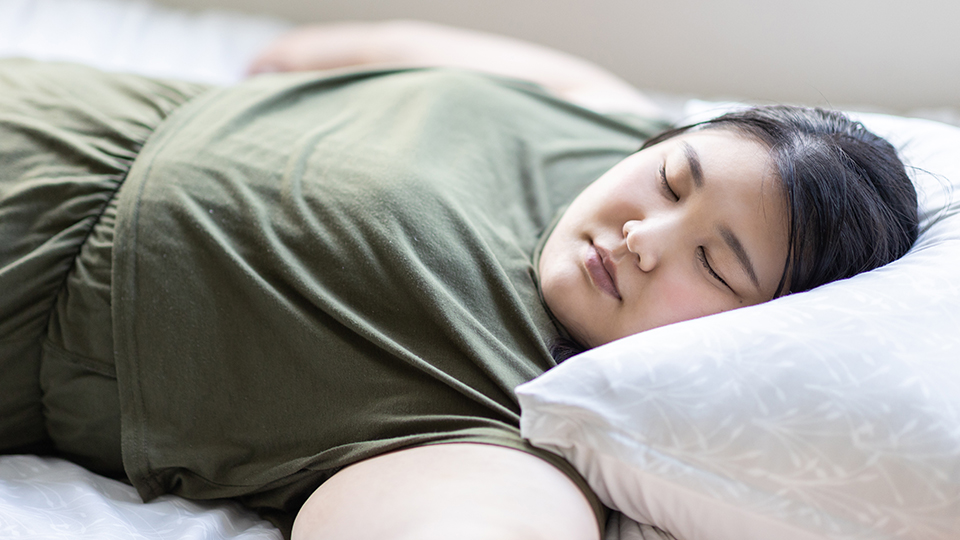Cardiodiabesity is a term that describes the relationship between type 2 diabetes, obesity, and cardiovascular disease – chronic conditions that are known to adversely impact health outcomes, quality of life, and cost of care. Researchers have identified sleep apnea as a common comorbidity among patients with cardiodiabesity – one that may further worsen outcomes for patients and increase the cost of care. People with sleep apnea experience upper airway blockage while they sleep, causing their breathing to stop and restart repeatedly.
To better understand the medical costs for cardiodiabesity patients with and without sleep apnea, the Evernorth Research Institute analyzed the claims data of 764,647 adults in the United States who were diagnosed in 2021 with a cardiovascular condition, type 2 diabetes, or obesity. The analysis also looks at the differences in sleep apnea diagnosis rates across various subpopulations to identify areas where there may be challenges in accessing care.
The study found that 13.3% of patients with cardiodiabesity also have a confirmed diagnosis or are receiving treatment for sleep apnea. When looking at the medical costs associated with this comorbidity, the analysis found that average medical costs were $6,185 higher among cardiodiabesity patients with sleep apnea than those without sleep apnea, an increase of 50%. This is particularly striking given the likelihood that as many as 80% of true sleep apnea patients are unaware of their diagnosis and are misclassified in this analysis.
What’s more is that only 35% of that difference in medical costs ($1,931) can be attributed to sleep tests, therapy, or equipment – meaning that even when disregarding those expenses, costs were 29% greater ($4,254) in the sleep apnea population compared to cardiodiabesity patients not classified with sleep apnea. Approximately 40% ($1,711) of that increase was associated with inpatient hospital stays. The single biggest cause for inpatient admission driving 17% ($285) of that difference was bariatric surgery. This effect should not be surprising as bariatric surgery has been shown to significantly reduce the severity of sleep apnea in addition to providing weight loss.
“Our results indicate that cardiodiabesity patients may be uniquely vulnerable to worse health outcomes and higher medical spend as they develop additional comorbidities,” said Urvashi Patel, PhD vice president of the Evernorth Research Institute.
Sleep apnea is most prevalent among patients with diagnosed obesity
For those who have not been diagnosed with cardiodiabesity, the prevalence of diagnosed sleep apnea was 13.3%; it’s higher in patients with obesity (17.4%) than in patients with diabetes (16.2%) or a cardiovascular condition (12.4%). In addition, men were more likely than women to have been diagnosed with sleep apnea. Among regions in the United States, white adults ages 50 to 64 who live in the Midwest region had the highest prevalence of diagnosed sleep apnea. Finally, the highest prevalence of diagnosed sleep apnea was observed among patients who reside in areas with low social needs, followed by medium social needs, with those in areas of very high social needs demonstrating the lowest prevalence of diagnosed sleep apnea.
“Within a condition that is already vastly underdiagnosed, patients in areas with higher social needs are less likely to be diagnosed with sleep apnea,” said Maryann Deak, MD, FAASM, sleep neurologist and executive medical director at eviCore by Evernorth. “We believe this may be the result of under-diagnosing patients in high needs areas. A recent meta-analysis found that factors such as lower socioeconomic status increases the risk of sleep apnea. People in areas with higher social needs may not have access to care and therefore haven’t received a diagnosis and aren’t receiving treatment.”
The biggest implication within this analysis, Patel added, is that patients with cardiodiabesity may benefit both from primary and secondary prevention of additional comorbidities. Future research should clarify whether conditions besides sleep apnea result in higher medical spend among cardiodiabesity patients.



